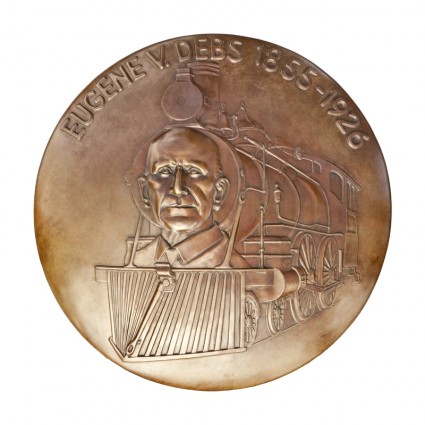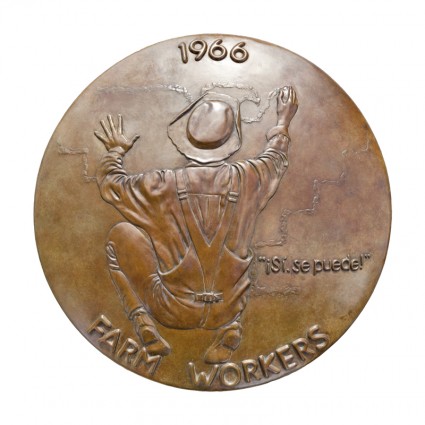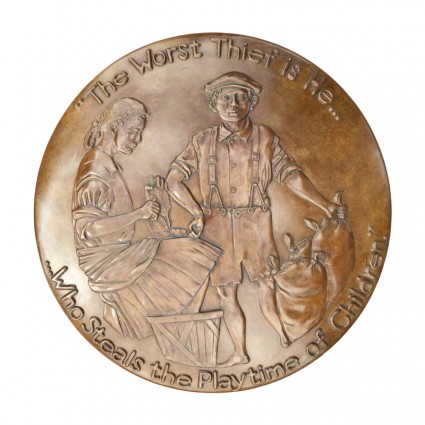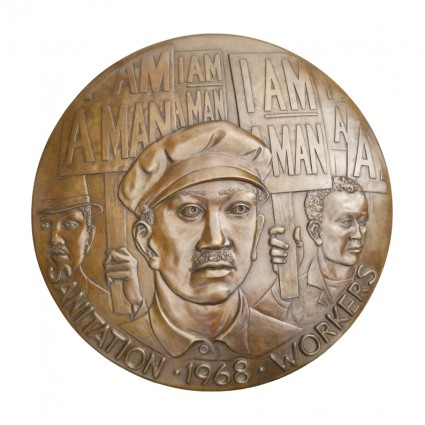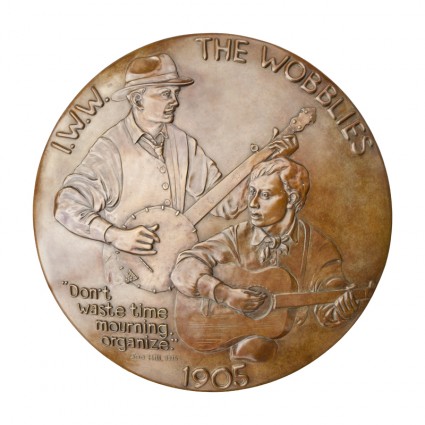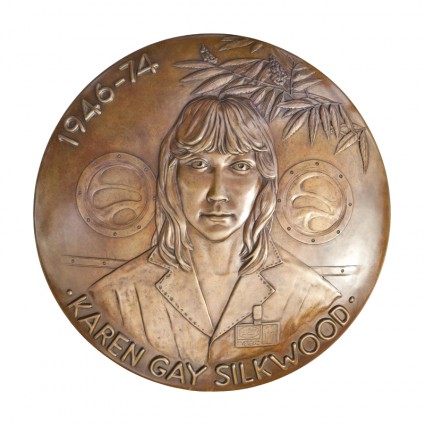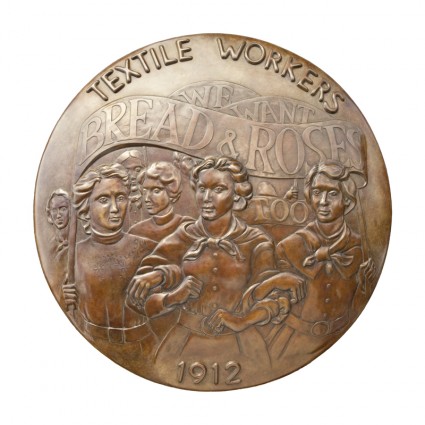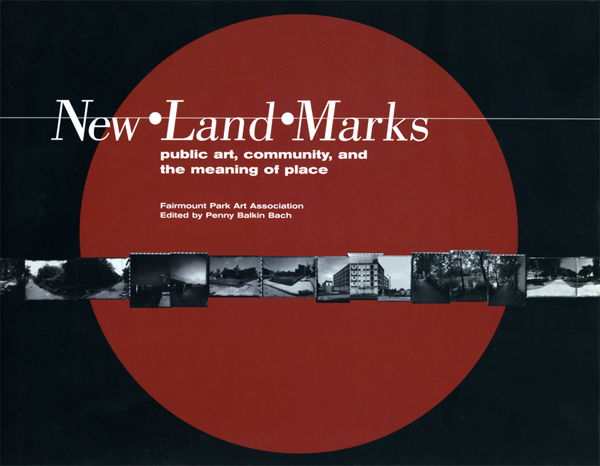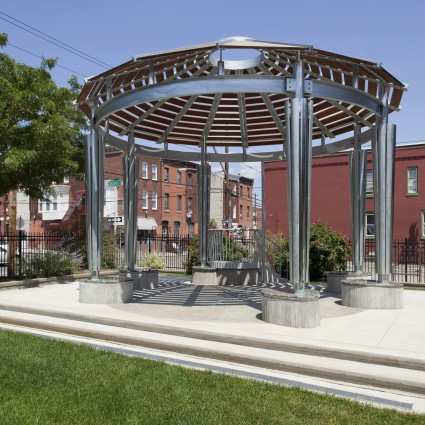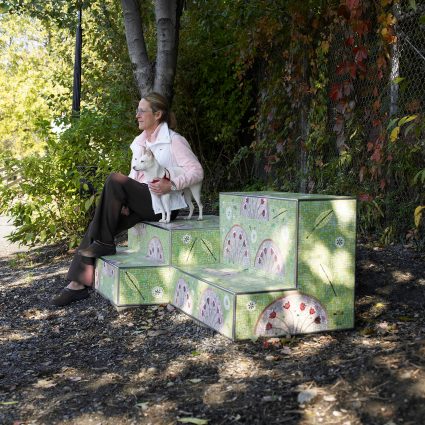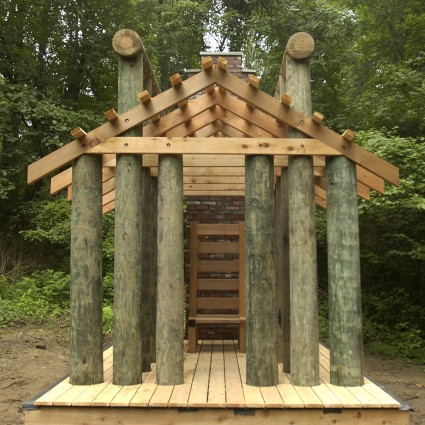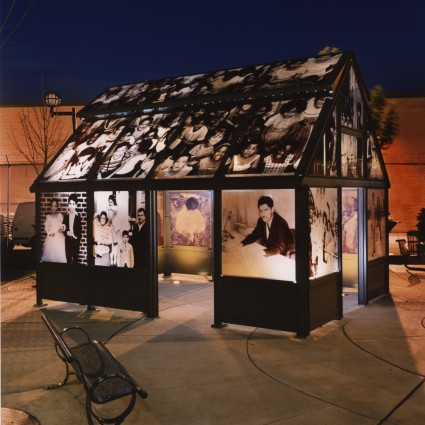At A Glance
Commissioned as part of the New•Land•Marks: public art, community, and the meaning of place program
Commemorates the contributions of organized labor nationwide and Philadelphia’s working class history
Each bronze relief sculpture represents an important event in labor history
Dedicated in 2010, The Labor Monument: Philadelphia’s Tribute to the American Worker by artist John Kindness was developed for Elmwood Park with the Friends of Elmwood Park in cooperation with the City of Philadelphia’s Department of Recreation as part of the Fairmount Park Art Association’s (now the Association for Public Art) New•Land•Marks program.
Workers of earlier generations often wore blue denim clothing…Blue paving and brick detailing around the seating elements suggest the denim and stitching on workers’ clothing.
The Labor Monument commemorates the contributions of organized labor nationwide and Philadelphia’s working class history. Celebrating Philadelphia’s pivotal and unique role in the American labor movement, the artwork transforms Elmwood Park into a community gathering space and an “outdoor history lesson.”
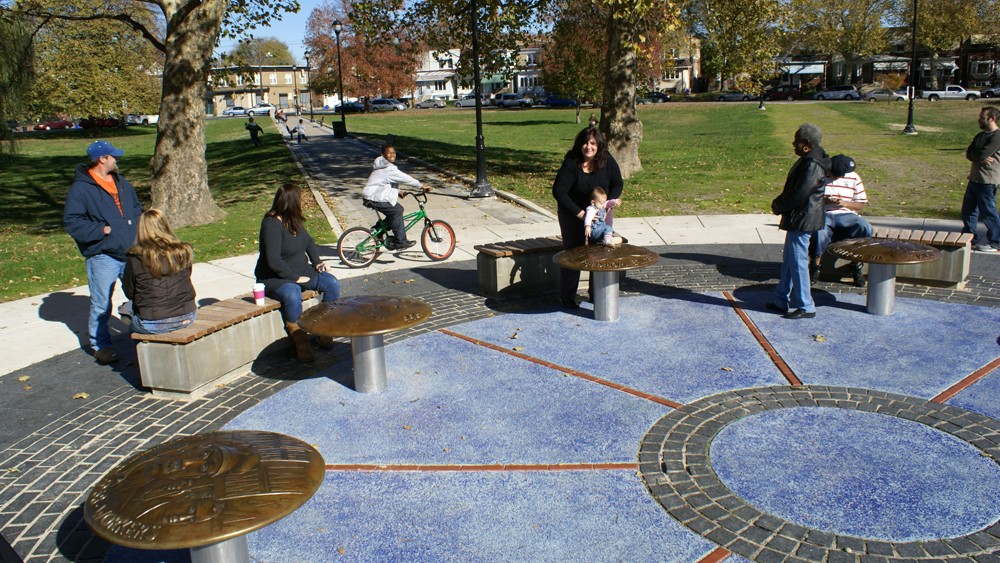
Workers of earlier generations often wore blue denim clothing, a common denominator regardless of trade or skill, with metal work buttons that bore a variety of images and slogans. Inspired by these buttons, the artist created seven large-scale Work Button Tables in bronze. Each bronze relief sculpture represents an important event in labor history. Located in the center of Elmwood Park, the Work Button Tables are situated in a circle surrounded by seven benches. Blue paving and brick detailing around the seating elements suggest the denim and stitching on workers’ clothing. Project supporters are identified and inscribed in a granite band around the perimeter of the artwork. A pathway connects the central seating area with a small circular court displaying the park’s flagpole.
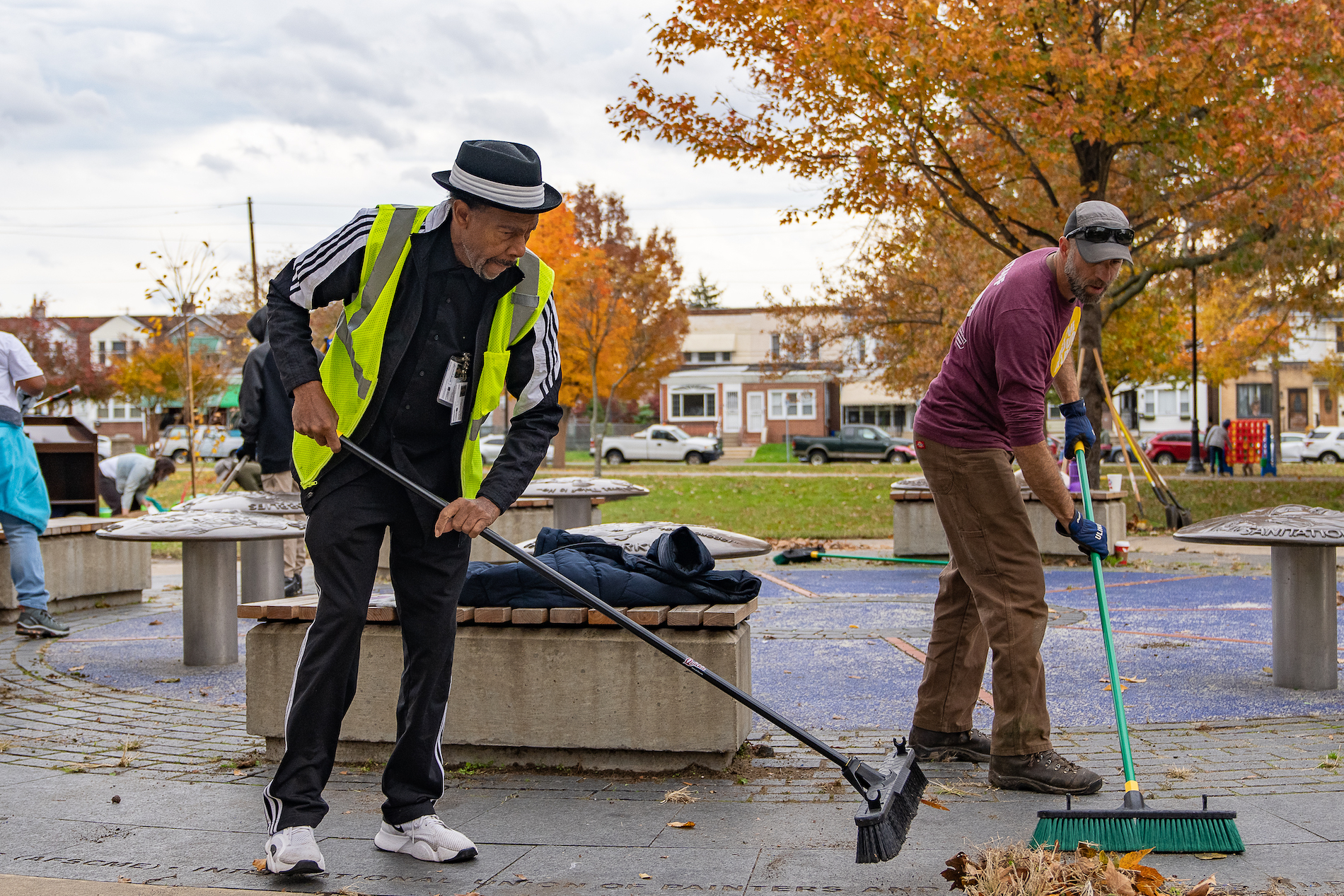
ABOUT ELMWOOD PARK: Elmwood Park is a 7-acre city park located on 71st and 72nd streets between Buist and Dicks Avenues in Philadelphia. From the late nineteenth century through much of the twentieth, Southwest Philadelphia prided itself on its thriving working class neighborhoods. Many thousands of Philadelphians raised their families there. They worked for major industries such as the Hog Island Shipyard, Fels Naptha, General Electric, and Westinghouse. Elmwood Park was originally developed as a centerpiece for the community, a gathering place where workers and their families could relax, socialize, and enjoy the park’s natural resources. Revitalization efforts were led by The Friends of Elmwood Park, a community organization chartered by the Commonwealth of Pennsylvania in 1995. The group supports efforts by community members to secure and beautify the park.
Voices heard in the Museum Without Walls: AUDIO program: John Kindness is an Irish artist who designed The Labor Monument: Philadelphia’s Tribute to the American Worker. Tom Paine Cronin is Director of the Comey Institute for Industrial Relations at St. Joseph’s University. He is the former President of AFSCME District Council 47. Cathy Brady (1956-2018) was a Philadelphia native and the Lead Community Organizer of The Labor Monument. | Segment Producer: Kerrie Hillman
Museum Without Walls: AUDIO is the Association for Public Art’s award-winning audio program for Philadelphia’s outdoor sculpture. Available for free by phone, mobile app, or online, the program features more than 150 voices from all walks of life – artists, educators, civic leaders, historians, and those with personal connections to the artworks.
This project was made possible through the generous support of the the Association for Public Art, William Penn Foundation, Claneil Foundation, Samuel S. Fels Fund, Greater Philadelphia Urban Affairs Coalition, Pennsylvania Department of Community and Economic Development, Service Employees International Union (SEIU), International Association of Bridge, Structural, Ornamental and Reinforcing Iron Workers, American Federation of State, County and Municipal Employees (AFSCME), International Union of Painters and Allied Trades (IUPAT-PATCH), Sheet Metal Workers International Association, United Food and Commercial Workers (UFCW), USW in honor of Tony Mazzocchi, Oil, Chemical and Atomic Workers Local 8-149.
RESOURCES:
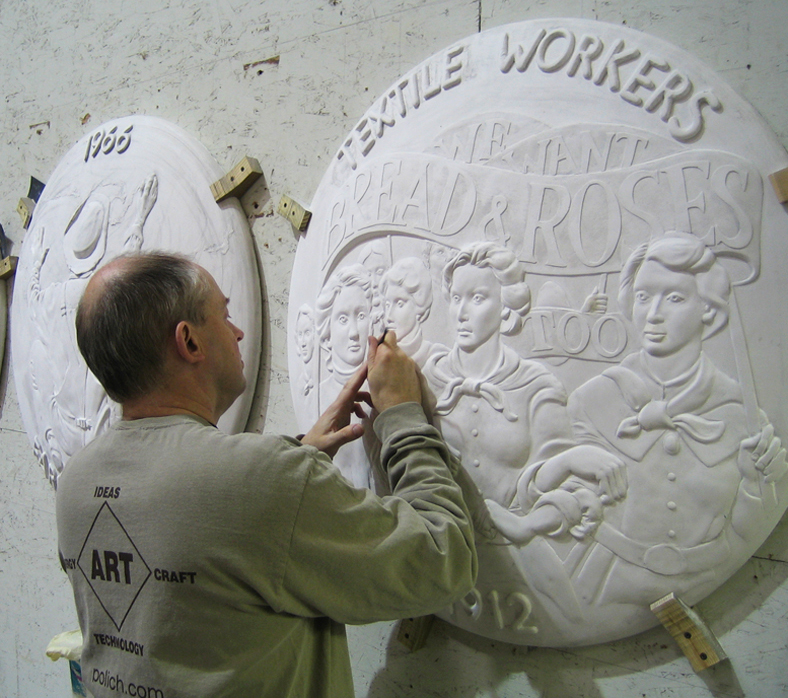
John Kindness was born in Belfast, Ireland and currently lives and works in London, England. Kindness’ father worked in the shipyards of Belfast, and his working class roots were a source of inspiration as he worked with the Friends of Elmwood Park to create a unique tribute in Philadelphia to the American worker. Kindness has completed a number of public art projects in his native Ireland. He has exhibited extensively in Europe and the United States and his artworks are included in the collections of the Museum of Fine Arts, Boston, Irish Museum of Modern Art, National Gallery of Ireland, and the Victoria & Albert Museum among others. In 1997, the artist was featured in a solo exhibition at the Institute of Contemporary Art at the University of Pennsylvania and was artist-in-residence at Philadelphia’s Fleisher Art Memorial. The artist returned to Philadelphia in 2009 to collaborate with writer Wendy Steiner on The Loathly Lady, an animated opera performed at the University of Pennsylvania’s Irvine Auditorium, and featuring Kindness’ original artwork.
The Labor Monument was commissioned as part of the Association for Public Art’s New•Land•Marks: public art, community, and the meaning of place program, and upon completion was donated to the City of Philadelphia. The program brought together artists and community organizations to plan and create new works throughout Philadelphia. Proposals incorporated public art into ongoing community development, urban greening, public amenities, and other revitalization initiatives. These efforts celebrated community identity, commemorated “untold” histories, and offered visionary, yet reasonable, ways to invigorate public spaces. Artworks that were eventually commissioned through this program include Common Ground, Manayunk Stoops: Heart and Home, Embodying Thoreau: dwelling, sitting, watching, and I have a story to tell you…
